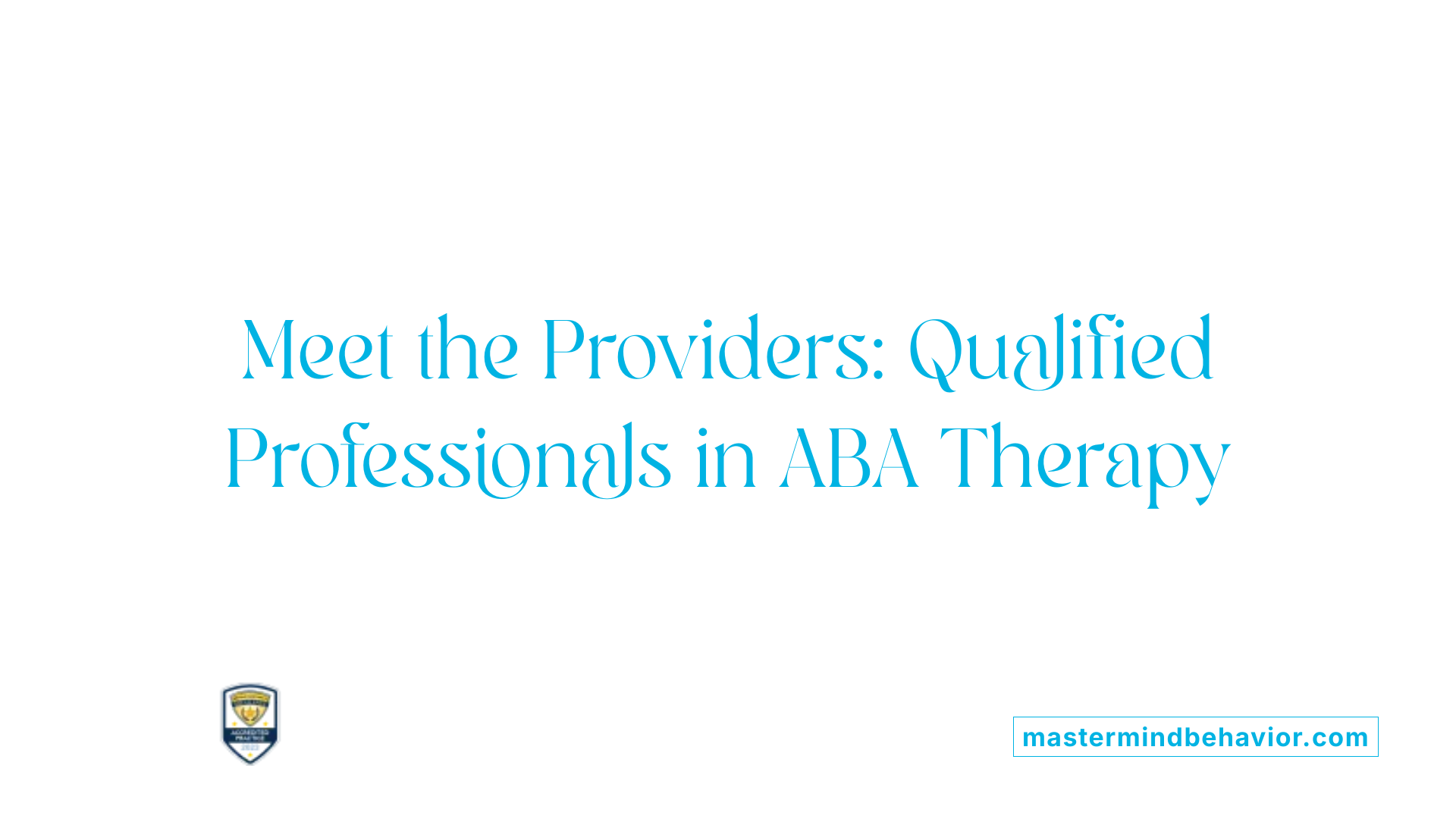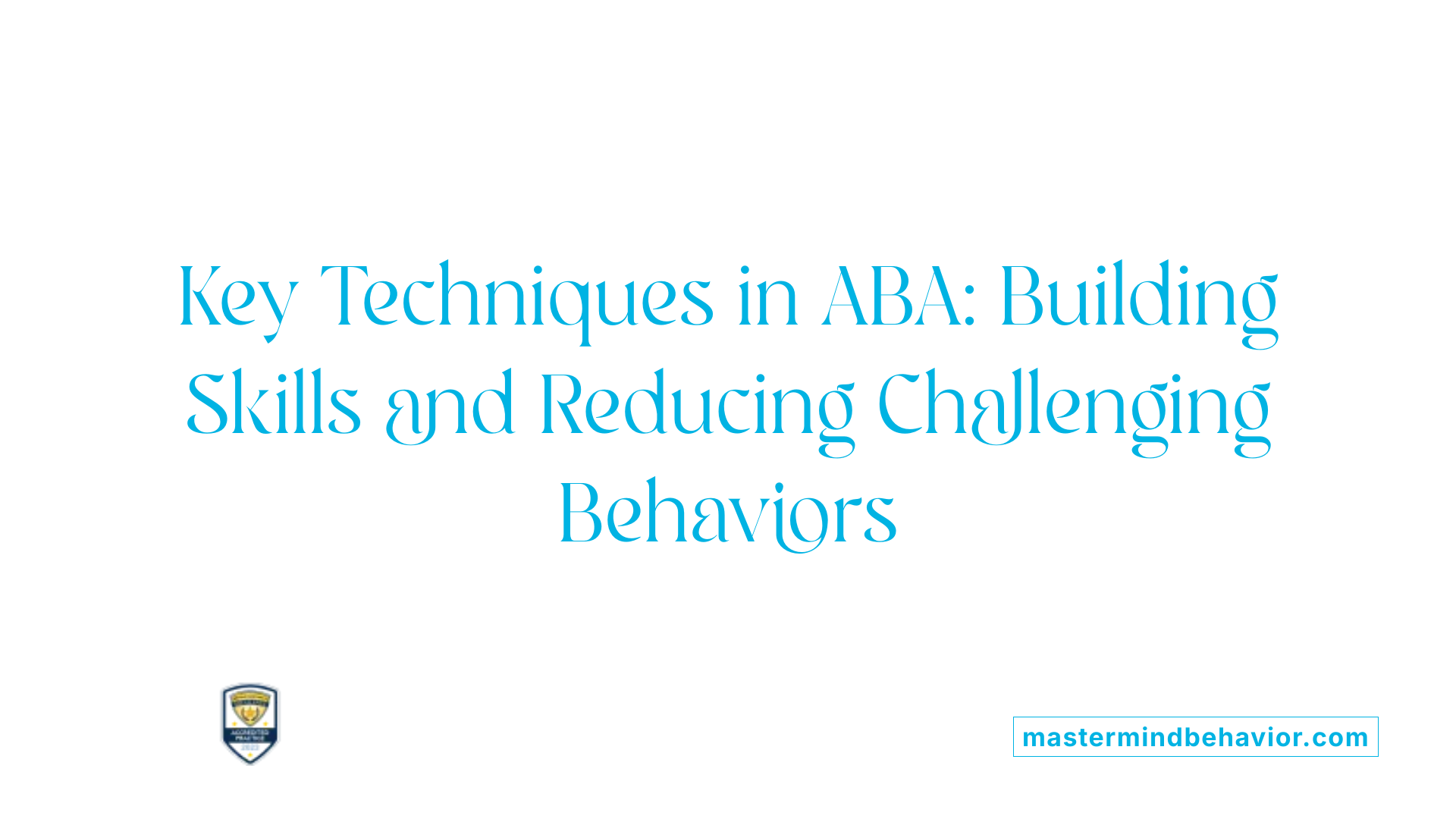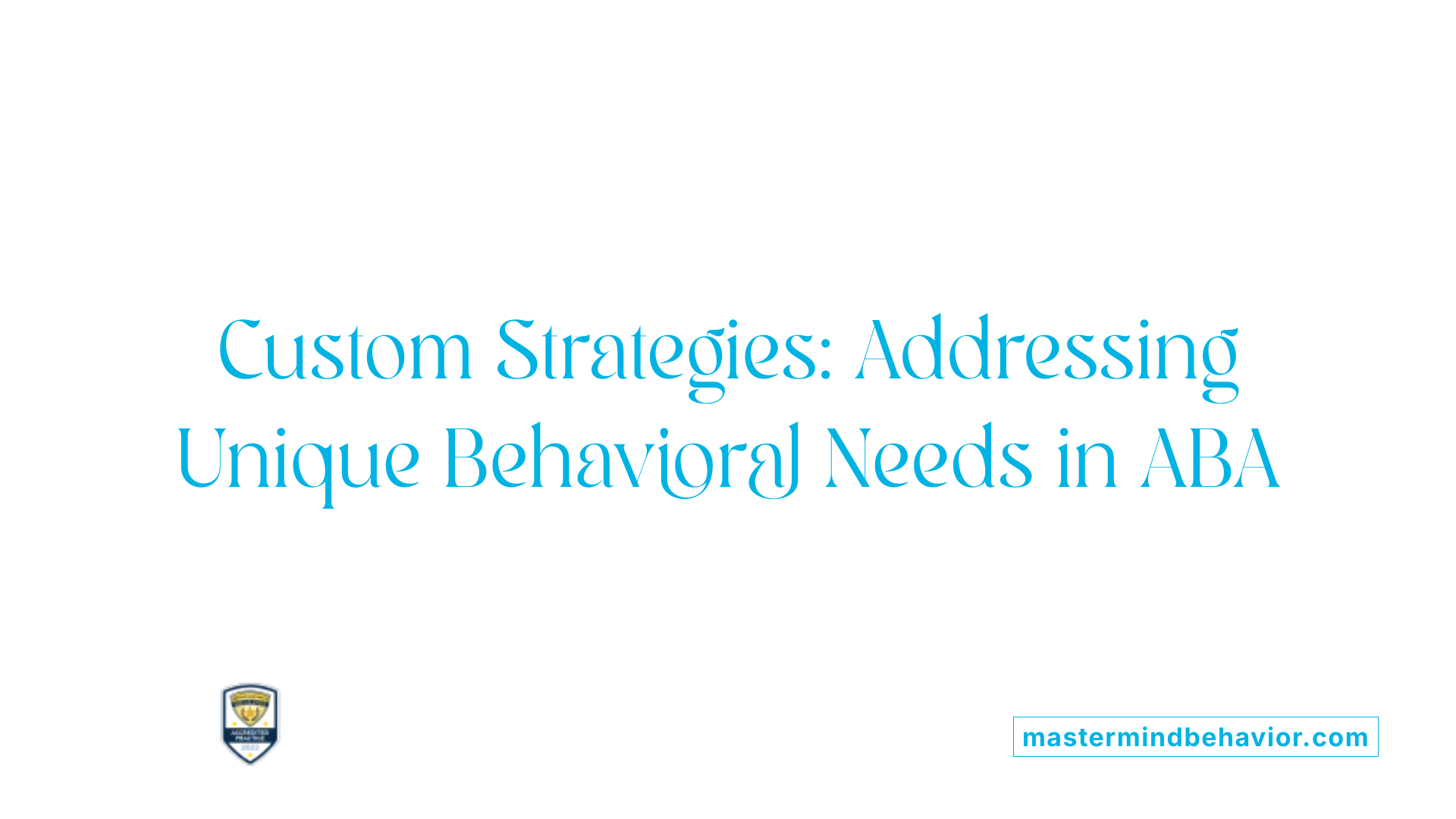Navigating Public Tantrums with ABA Therapy
Tantrums in public settings can be challenging for children with autism and their families. Applied Behavior Analysis (ABA) therapy offers science-backed strategies to identify triggers, understand behaviors, and teach children more adaptive skills to manage their emotions and reactions effectively. This article explores key ABA approaches tailored to reducing tantrums in public places, empowering families and caregivers with practical tools.
What is ABA Therapy and How Does it Support Children with Autism?

What is Applied Behavior Analysis (ABA) therapy and how does it help individuals with autism?
Applied Behavior Analysis (ABA) therapy is a scientifically validated approach based on the principles of behavior analysis. It focuses on understanding behaviors and how they are influenced by the environment. The therapy aims to increase beneficial behaviors such as effective communication, social interaction, and daily living skills while reducing challenging behaviors like tantrums or aggression.
Definition of ABA therapy
ABA therapy uses structured interventions that apply positive reinforcement to encourage desired behaviors. It also strategically applies natural consequences to discourage negative behaviors, creating a supportive framework that fosters learning and behavioral change.
Goals of ABA therapy
The primary goals of ABA therapy include improving communication abilities, enhancing social skills, and helping children with autism gain independence. By addressing the root causes of challenging behaviors and teaching appropriate alternatives, ABA therapy promotes meaningful progress in various areas of a child's life.
Personalization of ABA programs
ABA programs are highly individualized and developed by trained professionals such as board-certified behavior analysts (BCBAs). These programs are tailored to each child's specific needs, strengths, and interests. Continuous assessments and data collection inform adjustments to strategies, ensuring the therapy remains effective and aligned with the child's evolving goals.
Methods and ongoing assessment
ABA incorporates diverse teaching methods including Discrete Trial Training (DTT), which breaks tasks into manageable steps; Pivotal Response Training (PRT), which focuses on motivation and natural cues; Natural Environment Training (NET), promoting learning through play and daily routines; and Functional Communication Training (FCT), which teaches alternative ways to communicate needs.
Ongoing assessment through careful data analysis allows therapists to monitor progress and adapt approaches. This flexible and evidence-based system enables children with autism to develop the essential skills needed for greater independence and improved quality of life.
Who Provides ABA Therapy and What Are Their Qualifications?

Roles of BCBAs, RBTs, and Other Professionals
ABA therapy is delivered by a specialized team led by Board Certified Behavior Analysts (BCBAs). These professionals hold advanced graduate degrees and certifications in behavior analysis. They are responsible for conducting comprehensive behavioral assessments, designing individualized treatment plans, and supervising the implementation of ABA strategies. Alongside BCBAs, Registered Behavior Technicians (RBTs) and behavior therapists carry out the day-to-day therapy sessions. These individuals have completed specific training and hold credentials certifying their ability to apply ABA techniques under BCBA supervision. Assistant behavior analysts and other specialists may also be part of the team to provide additional support based on the child's needs.
Training and Certification
BCBAs earn their certification after completing graduate-level coursework in behavior analysis, accruing supervised practical experience, and passing a national exam. RBTs undergo focused training on ABA principles and receive certification through a structured process that includes competency assessments. Maintaining these credentials requires ongoing education and adherence to ethical standards established by professional bodies to ensure quality and consistency in service delivery.
Importance of Supervision and Collaboration
Effective ABA therapy depends on careful oversight. BCBAs supervise RBTs and therapists to ensure that interventions are correctly implemented and that collected data accurately reflects the child's progress. This collaborative approach allows for timely adjustments to treatment plans, enhancing efficacy. Collaboration extends beyond the therapy team to include educators and other professionals involved in the child's care, fostering consistency across environments.
Parental Involvement
Parental engagement is crucial in maximizing ABA therapy outcomes. Parents receive training to reinforce skills at home, fostering generalization of behaviors across settings. Active communication between parents and therapists supports consistent implementation of strategies and helps address challenges as they arise. This partnership empowers families and promotes sustained progress.
| Role | Qualification | Responsibilities |
|---|---|---|
| Board Certified Behavior Analyst (BCBA) | Graduate degree + certification | Design programs, supervise therapy, analyze data |
| Registered Behavior Technician (RBT) | Targeted training + certification | Implement therapy plans, collect data, report progress |
| Behavior Therapist | Varies; training in ABA practice | Conduct therapy sessions, support skill development |
| Parents | Training and collaboration | Reinforce skills at home, support consistency across settings |
Core ABA Techniques to Reduce Challenging Behaviors

What are the main components or techniques used in ABA therapy?
Applied Behavior Analysis (ABA) therapy uses a variety of approaches to teach new skills and reduce challenging behaviors in children with autism. Two fundamental strategies include positive reinforcement, which encourages desired behaviors by adding a motivating stimulus, and negative reinforcement, which strengthens behavior by removing an unpleasant condition.
Discrete Trial Training (DTT)
DTT breaks down complex skills into small, manageable steps. Each trial consists of a clear instruction, a response from the child, and a consequence such as reinforcement or correction. This structured, repetitive style helps children acquire specific skills with measurable progress.
Natural Environment Training (NET)
NET focuses on skill development in real-life settings, using the child's interests and natural activities. This method encourages the generalization of learning by teaching within the context where skills naturally occur.
Functional Communication Training (FCT)
FCT replaces inappropriate or challenging behaviors with effective communication strategies. By teaching children alternative ways to express their needs, FCT reduces frustration and the occurrence of problem behaviors.
Functional Behavior Assessments
Comprehensive assessments identify the reasons behind behaviors — such as seeking attention, escaping tasks, or sensory needs — which guide the development of targeted interventions.
Prompting and Shaping
To help children learn new behaviors, ABA uses prompting—providing assistance or cues—and shaping, gradually reinforcing successive approximations of the desired behavior. Prompts are systematically faded to promote independence.
These core ABA techniques are highly individualized based on functional assessments to meet each child's unique needs. Incorporating structured teaching with naturalistic methods allows for meaningful progress in social, communication, and adaptive skills, ultimately reducing challenging behaviors effectively.
Understanding Behavioral Functions Behind Tantrums

What Are the Four Functions of Behavior?
Behavioral functions explain why a child might engage in certain behaviors, especially tantrums in children with autism. These functions are fundamental for developing effective ABA (Applied Behavior Analysis) strategies. The four main functions include:
- Attention Seeking: Behaviors performed to gain social attention or interaction.
- Escape/Avoidance: Behaviors aimed at escaping or avoiding unwanted tasks or situations.
- Access to Tangibles: Actions motivated by the desire to obtain objects or privileges.
- Sensory/Automatic Reinforcement: Behaviors that provide internal sensory input or self-stimulation.
How Does Attention Seeking Influence Tantrums?
Attention-seeking behaviors increase when a child receives social interaction after displaying them. For example, a tantrum might be triggered when a child desires a caregiver’s attention. ABA strategies to address this include scheduled attention times, teaching appropriate ways to request attention, and planned ignoring of minor disruptive behaviors to reduce reinforcement.
What Role Does Escape or Avoidance Play?
Some tantrums result from attempts to avoid or escape unpleasant tasks or demands. When a child wants to avoid a chore or situation, tantrums can serve this function. Effective interventions include breaking tasks into smaller chunks, using high-probability request sequences (asking easier tasks first), gradual exposure to the avoided activity, and teaching children to appropriately request breaks.
How Does Access to Tangibles Factor In?
Children may engage in tantrums to gain access to desired items or activities. When obtaining these reinforces the behavior, tantrums can be maintained. Teaching functional communication, such as requesting items appropriately, and using reward-based contingency management are common ABA strategies to tackle this.
What is Sensory or Automatic Reinforcement?
Some behaviors are self-reinforcing because they provide soothing or stimulating sensory input. Examples include hand-flapping or rocking that continues regardless of external consequences. Solutions typically involve sensory diets (planned sensory activities), environment changes, and offering alternative sensory activities to meet sensory needs in positive ways.
Why is Understanding Multiple Control Important?
Behaviors often serve more than one function at a time or may shift functions over time. A tantrum might be both attention-seeking and escape-driven. Therefore, thorough functional behavioral assessments are essential to uncover all maintaining variables and develop tailored, effective ABA programs addressing every function involved.
ABA Strategies Tailored to Specific Behavioral Functions

How Does Scheduled Attention Help Manage Attention-Seeking Behaviors?
Scheduled attention is a proactive ABA strategy designed to reduce behaviors performed to gain social interaction. Instead of responding to every attention-seeking behavior, caregivers provide regular, planned intervals of positive attention. This approach teaches children to seek interaction appropriately and decreases the need to engage in disruptive behaviors to get noticed.
What Is Planned Ignoring and When Is It Used?
Planned ignoring involves intentionally withholding attention from minor disruptive behaviors that serve the attention-seeking function. By not reinforcing these behaviors with a response, they're less likely to recur. It's crucial to apply this technique consistently while ensuring that more significant needs are still met to avoid frustration.
How Do Task Chunking and Teaching Break Requests Address Escape or Avoidance Behaviors?
Task chunking breaks demanding activities into smaller, manageable parts to reduce overwhelm. This method helps children feel more successful and less resistant. Teaching children to request breaks appropriately gives them control over when they can pause, replacing escape-driven behaviors with communication skills.
What Role Does Contingency Management Play in Access to Tangible Reinforcement?
Contingency management strategically reinforces behaviors by providing desired objects or privileges only after appropriate behavior occurs. This encourages children to use functional requesting skills to access items rather than using disruptive actions. Clear expectations about the relationship between behavior and outcomes strengthen this approach.
How Are Sensory Diets and Alternative Sensory Activities Utilized?
For behaviors maintained by sensory or automatic reinforcement, sensory diets tailor specific sensory inputs throughout the day to meet the child's needs. Providing alternative sensory activities redirects self-stimulatory behaviors toward more appropriate forms and helps fulfill sensory needs without disruption.
| ABA Strategy | Behavioral Function Addressed | Brief Description |
|---|---|---|
| Scheduled Attention | Attention-seeking | Regular, positive interactions reduce disruptive bids for attention |
| Planned Ignoring | Attention-seeking | Withholding attention from minor disruptive behaviors |
| Task Chunking | Escape/Avoidance | Breaking tasks into smaller steps to reduce avoidance |
| Teaching Break Requests | Escape/Avoidance | Encouraging appropriate communication to request breaks |
| Contingency Management | Access to Tangibles | Reinforcing functional requesting with desired items |
| Sensory Diets | Sensory/Automatic Reinforcement | Providing scheduled sensory input to reduce self-stimulatory behaviors |
| Alternative Activities | Sensory/Automatic Reinforcement | Offering engaging sensory options to replace disruptive behaviors |
Pre-Teaching and Preparing for Public Outings
Why Are Visual Schedules Important for Public Outings?
Visual schedules present a clear and predictable outline of what will happen during outings. For children with autism, this predictability reduces anxiety by showing each step of the outing visually, making transitions smoother. Visual schedules can be pictures, icons, or written words depending on the child's comprehension level.
How Do Social Stories Help in Preparing Children?
Social stories describe social situations step-by-step, addressing what to expect and how to behave. They help children understand the routines and social norms of public settings, reducing fear or confusion. For instance, a story about visiting a grocery store explains waiting in line and asking politely for help.
What Role Do First-Then Statements Play?
First-Then statements clearly link an expected behavior or task with a motivating reward. For example, "First we shop, then you get to play at the park." This relationship helps children see the benefit of compliance and keeps them engaged during potentially challenging tasks.
How Can Expected Behaviors Be Taught Before Outings?
Teaching expected behaviors ahead of time involves role-playing or practicing specific skills like greeting, waiting patiently, and following instructions. This rehearsal builds confidence and competence. Parents and therapists may use prompts and positive reinforcement to solidify these skills before the outing.
By integrating visual schedules, social stories, First-Then statements, and explicit teaching of behaviors, ABA strategies create a supportive framework. This pre-teaching allows children to anticipate what will happen and understand how to respond appropriately, ultimately enhancing their ability to participate successfully in public environments.
Tools and Techniques for Smooth Transitions in Public
Timers and countdowns
Timers and countdowns are effective tools in helping children with autism understand when a transition is about to occur. By providing a visual or auditory cue, these tools give clear signals about impending changes, reducing anxiety and promoting compliance. Using timers creates predictability, which many children find comforting during potentially stressful public outings.
Transition objects like toys or sensory items
Transition objects, such as favorite toys or sensory items, help ease the move from one activity or setting to another. These items offer comfort and distraction, allowing the child to focus on something familiar amid changes. Sensory objects can also provide calming sensory input, reducing potential frustration or distress during transitions.
Short, clear instructions
Using short, simple, and clear instructions improves children’s ability to understand and respond promptly during public transitions. This approach minimizes confusion and supports comprehension by breaking down expectations into manageable steps, making it easier for children to follow routines and rules in unfamiliar or busy environments.
Using reinforcers effectively during outings
Reinforcers like preferred items or activities play a critical role in motivating positive behaviors during public outings. Offering tangible rewards or praise increases the child’s willingness to comply with expectations and participate in transitions. By pairing reinforcement with desired behavior, ABA strategies ensure that children learn and maintain smooth transition skills.
Teaching Social Skills and Appropriate Public Behavior
Greeting and Interaction Skills
Teaching children with autism appropriate greetings and social interaction skills is a fundamental part of ABA therapy. Through structured lessons and practice, children learn how to initiate conversations, respond to social cues, and engage in everyday exchanges. This foundation helps reduce social anxiety and builds confidence in public settings.
Role-Playing Real-Life Scenarios
ABA programs often incorporate role-playing to simulate real-life situations, such as ordering food at a restaurant or asking for help. This practice enables children to rehearse and generalize social skills in a safe and supportive environment. Role-playing also allows therapists to provide immediate feedback and reinforcement to improve the child's responses.
Encouraging Positive Peer Interactions
Social engagement is encouraged with peers through planned activities and facilitated opportunities. Positive peer interactions are reinforced using praise, small rewards, or preferred activities. These reinforcements motivate children to interact appropriately and help develop friendships, which are crucial for personal growth and independence.
Reinforcement Methods
Reinforcement is a central ABA strategy used to increase desirable social behaviors. Preferred items, activities, or social praise serve as motivators and rewards for compliance and participation. Additionally, prompts and visual supports like social stories can prepare children for social expectations, helping them succeed in various public scenarios.
These ABA-driven approaches equip children with autism with essential social skills and behavioral strategies. They prepare children not only to navigate public settings confidently but also to build meaningful relationships and enjoy positive social experiences.
Addressing Triggers and Preventing Meltdowns
Identifying Common Triggers Such as Sensory Overload and Communication Difficulties
Understanding what triggers aggressive or challenging behaviors is the first step in managing meltdowns effectively. Common triggers for children with autism include sensory overload—such as loud noises or crowded environments—and difficulties with communication. These triggers can cause frustration and anxiety, leading to behavioral outbursts. ABA therapy emphasizes identifying these antecedents to tailor interventions accordingly.
Teaching Emotional Regulation
ABA programs incorporate teaching emotional regulation skills to help children manage their feelings before they escalate into a meltdown. Strategies include role-playing situations to practice calming techniques and reinforcing positive emotional responses. Developing these skills enables the child to recognize signs of distress and apply coping mechanisms.
Use of Calm Responses and Redirection
When meltdowns occur, caregivers and therapists use calm responses to avoid escalating the situation. Redirection—gently guiding the child’s focus to an alternative activity or behavior—helps interrupt the challenging behavior without confrontation. This approach aims to reduce frustration and promote more adaptive reactions.
Functional Communication Methods to Express Needs
Many challenging behaviors stem from difficulties in expressing needs or desires. ABA therapy teaches functional communication techniques such as Functional Communication Training (FCT), enabling children to request help, breaks, or preferred items appropriately. Improving communication skills decreases frustration-driven behaviors and supports smoother interactions across environments.
Employing these ABA strategies helps children with autism better handle triggers, reducing the frequency and intensity of meltdowns and promoting more positive social engagement.
Parental and Caregiver Involvement in Public Settings
Training Parents and Caregivers
Effective ABA therapy for children with autism extends beyond clinical settings, relying heavily on well-trained parents and caregivers. Training programs focus on equipping them with the skills to recognize triggers of tantrums, apply positive reinforcement techniques, and use behavioral strategies such as planned ignoring and redirection in real-time public situations.
Home-Based Strategies
Parents are taught specific home-based strategies to create consistency and reinforce desired behaviors. These include implementing visual schedules, using First-Then statements to clarify routines, and practicing communication and emotional regulation skills regularly. Introducing transition objects and timers at home prepares children for smoother transitions during outings.
Consistency Across Settings
Maintaining consistency between home, therapy sessions, and public settings is crucial for behavior generalization. Parents and caregivers are encouraged to apply the same ABA techniques learned during training uniformly, ensuring the child receives predictable responses to behaviors, which reduces confusion and frustration that might trigger outbursts.
Collaboration with Professionals
Ongoing collaboration between families and ABA professionals enhances intervention success. Professionals tailor strategies based on individual assessments and provide support for adapting techniques in various environments. This partnership promotes data sharing, progress monitoring, and adjustments to intervention plans, ensuring the child's needs are consistently addressed across all settings.
Benefits, Limitations, and Importance of Early Intervention
What are the benefits and potential limitations of ABA therapy for individuals on the autism spectrum?
ABA therapy provides significant benefits for children with autism, including improvements in communication skills, social behaviors, adaptive functioning, and independence. By employing evidence-based methods like positive reinforcement, ABA supports meaningful development in language, self-care, and social interaction. This comprehensive approach helps children reduce challenging behaviors and learn functional skills that boost their quality of life.
Modern ABA techniques often focus on naturalistic teaching within typical routines, making therapy engaging and applicable to everyday settings. Strategies such as Discrete Trial Training (DTT), Pivotal Response Training (PRT), Natural Environment Training (NET), and Functional Communication Training (FCT) facilitate skill acquisition and generalization.
However, ABA therapy has limitations and ethical considerations. Historically, some practices involved aversive techniques that are no longer used due to ethical concerns. Today, therapy emphasizes a person-centered approach, respecting the child’s emotional well-being and preferences. Critics highlight that excessive focus on behavior modification might overlook emotional or psychological needs if therapy is not individualized appropriately.
Early and consistent intervention with ABA is crucial. Research recommends at least 25 hours per week for optimal benefit, allowing skills to develop before negative behaviors become ingrained. Progress monitoring using data-driven methods enables therapists to adjust goals and strategies for each child’s unique learning profile.
Parental involvement and collaboration with educators and caregivers remain essential to ensure consistency and reinforce skills across settings. Ultimately, ABA therapy’s success depends on individualized, ethical delivery that balances behavior change with emotional support, aimed at fostering independence and long-term growth.
Achieving Success with ABA in Public Settings
ABA therapy, with its individualized strategies anchored in understanding behavior and its functions, equips children with autism to manage and reduce tantrums in public environments effectively. Through preparation, teaching communication and social skills, managing triggers, and engaging caregivers, ABA fosters greater independence and positive experiences outside the home. Early and consistent application of these methods, guided by trained professionals and supported by family involvement, maximizes the benefits, helping children thrive in community settings and enhancing their quality of life.
References
- Unlocking the Four Functions of Behavior
- How ABA Therapy Reduces Aggressive Behaviors in ...
- How to Use ABA Strategies in Public Settings
- Effective ABA Therapy Strategies for Children with Autism
- The Controversy Around ABA
- Applied Behavior Analysis (ABA)
- 6 Benefits of ABA Therapy for Children with Autism
- Applied Behavior Analysis (ABA)
- 6 Benefits of ABA Therapy for Children with Autism









